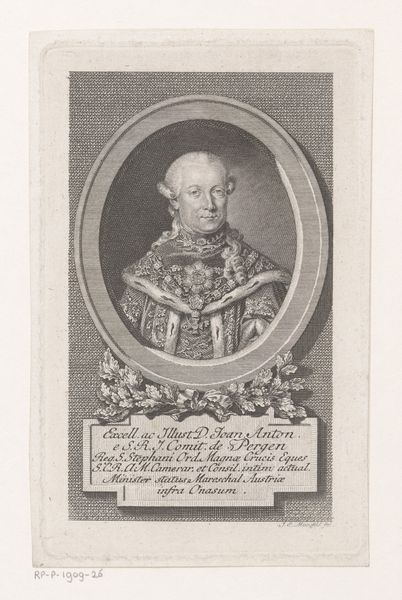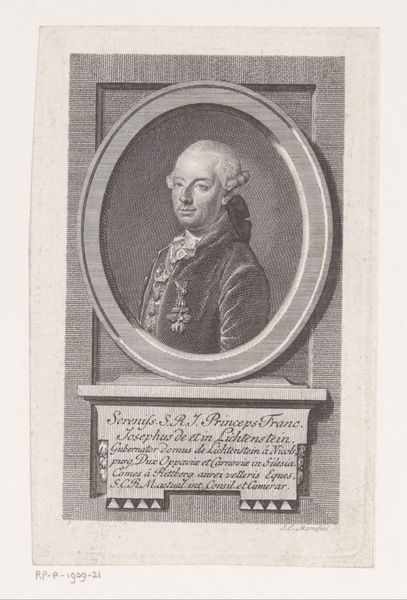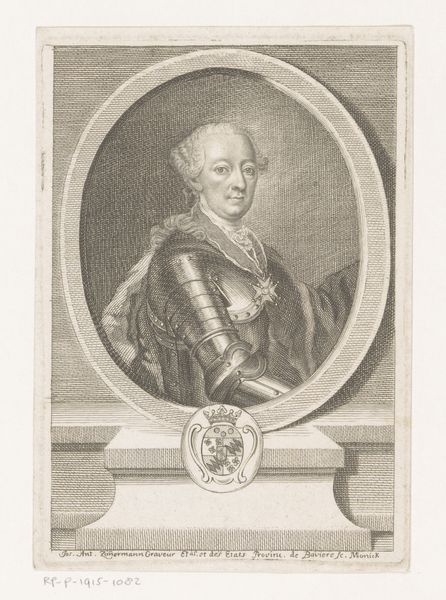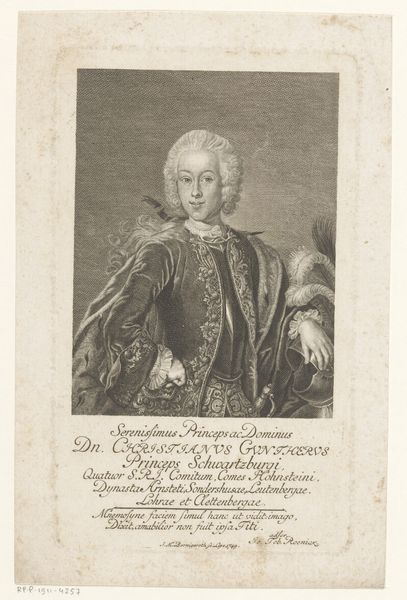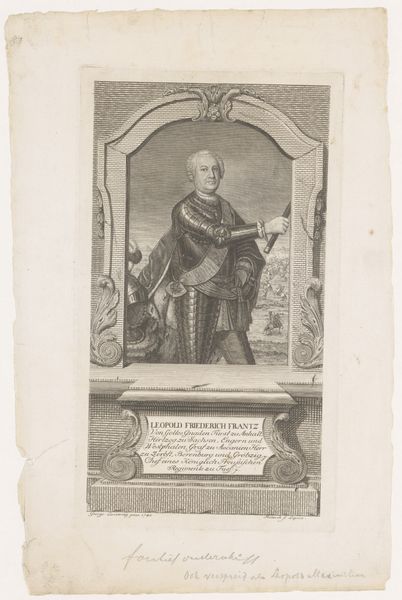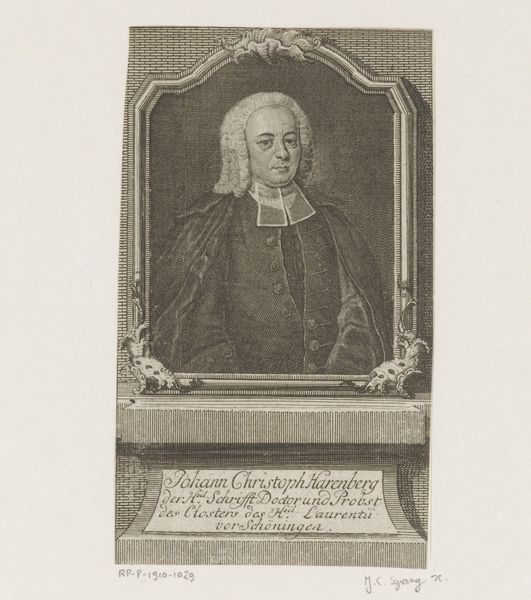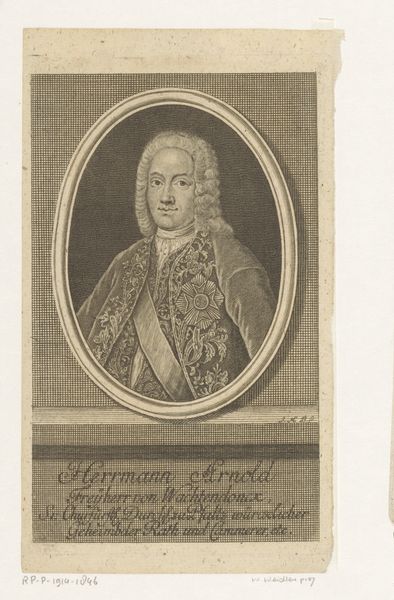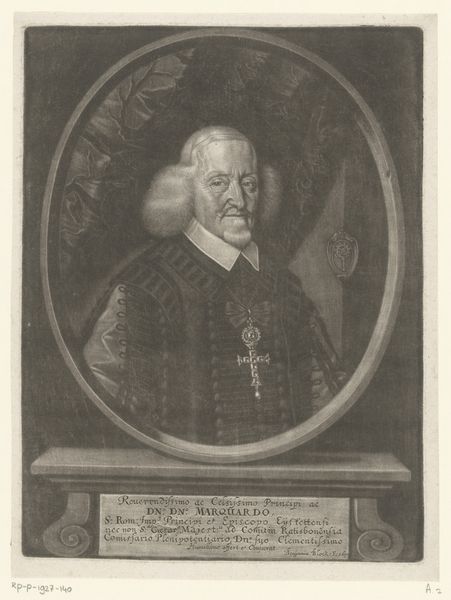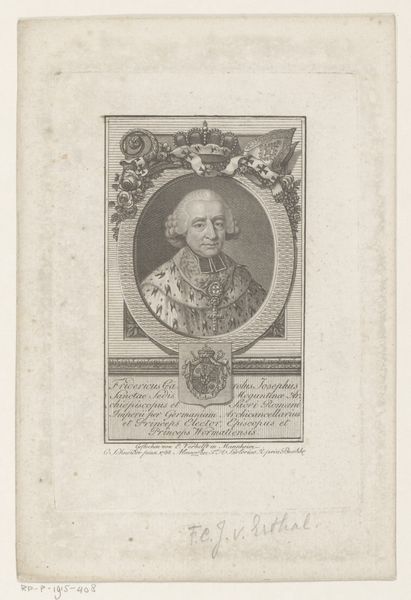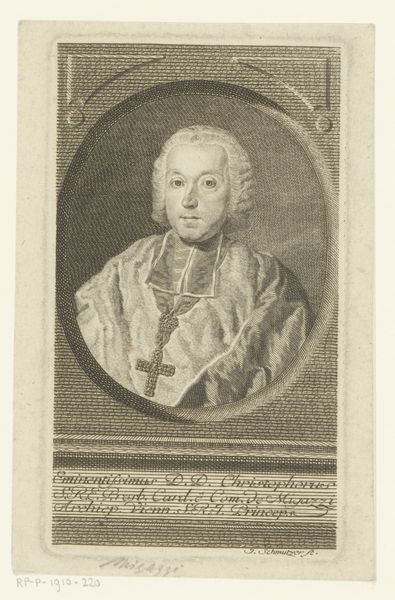
Dimensions: height 178 mm, width 110 mm
Copyright: Rijks Museum: Open Domain
Curator: What a striking example of late Baroque portraiture! Editor: This is "Portret van Heinrich Kajetan von Blümegen," an engraving made sometime between 1749 and 1796 by Johann Ernst Mansfeld. The detail is incredible, but there's a stiffness to it. How would you interpret this work beyond just a portrait? Curator: We need to unpack the visual language of power. This isn't just an image; it's a carefully constructed statement about identity, status, and privilege. Note the elaborate attire, the rigid posture. What does that communicate to you about Blümegen’s position within the Austrian aristocracy? Editor: It screams authority and wealth, definitely. I mean, look at the inscription too! He's practically listing all his titles. Curator: Exactly! And that inscription isn't just text; it's integral to the visual rhetoric of power. In that era, who had access to commissioning and circulating images like these? Consider the role such images played in maintaining a hierarchical social order. Who was being represented, and more importantly, who *wasn’t*? Editor: So, you're saying that beyond the artistry, these portraits reinforced social inequalities. It served as propaganda, almost. Curator: Precisely. How might viewing this artwork through the lens of critical race theory or feminist art history shift our understanding of it? For instance, what’s absent from this portrait, whose stories aren’t being told? Editor: That gives me a lot to think about. I was focused on the artistic style, but I see how it's connected to broader social power dynamics. Thanks for opening up that perspective. Curator: It is a reminder that art never exists in a vacuum.
Comments
No comments
Be the first to comment and join the conversation on the ultimate creative platform.

